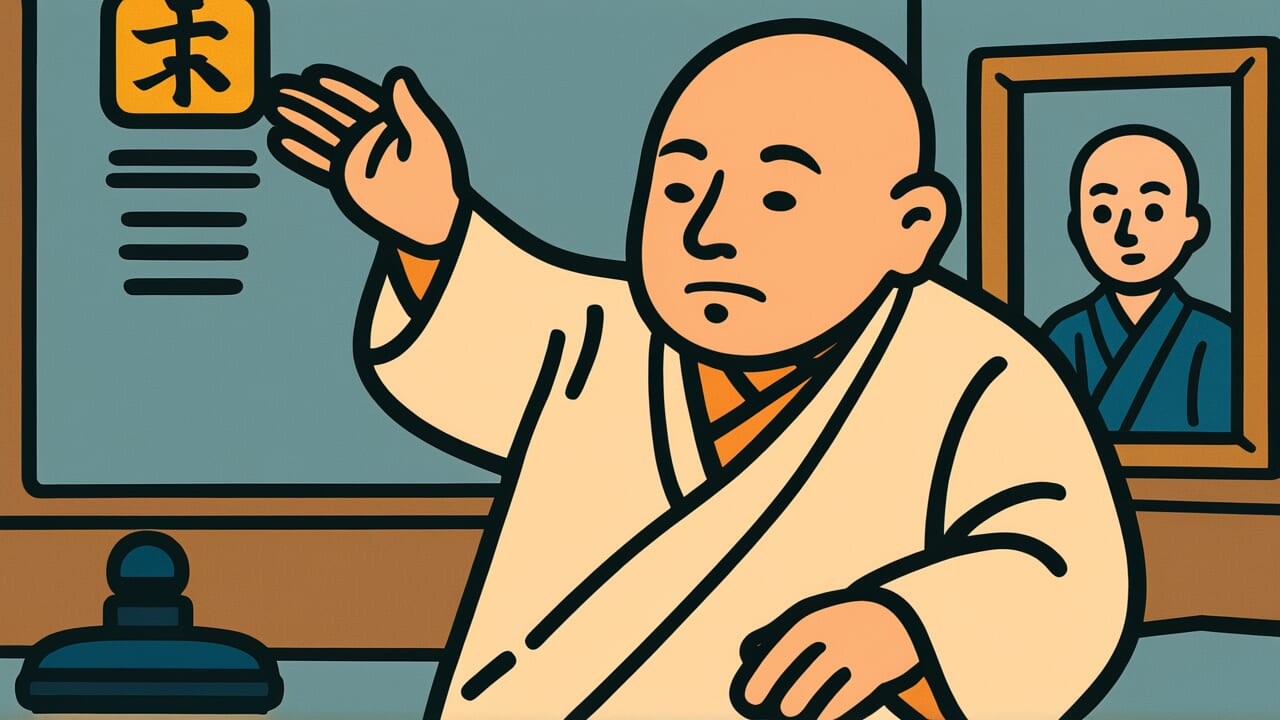How to Read “Whether the doctor takes it or the priest takes it”
いしゃがとるかぼうずがとるか
Meaning of “Whether the doctor takes it or the priest takes it”
“Whether the doctor takes it or the priest takes it” means that death is unavoidable, whether you die from illness or from old age.
This proverb expresses a fundamental truth about human life. It’s used when talking about the inevitable fate of death that awaits everyone.
There’s a difference between dying young from illness and living a long life until natural death. But ultimately, everyone faces the same end.
You either pay the doctor for medical treatment, or you live long and eventually pay for funeral expenses. Either way, life’s end will surely come.
Even today, people use this saying when discussing life’s impermanence or death’s inevitability. However, it’s a somewhat old-fashioned expression.
You won’t hear it often in everyday conversation. Instead, it’s usually quoted when people reflect on life’s fragility or think about the meaning of existence.
Origin and Etymology
No clear written records explain the origin of this proverb. However, scholars believe it came from the everyday experiences of common people during the Edo period.
“The doctor takes it” refers to doctors collecting medical fees when someone dies from illness. “The priest takes it” means Buddhist monks receiving payment for funeral services when someone dies of old age.
For ordinary people in the Edo period, medical expenses and funeral costs were major financial burdens. When you got sick, you had to see a doctor. When you died, you needed a monk to perform funeral rites.
What’s interesting is how this proverb handles such a heavy topic with a touch of humor. It takes the unavoidable fate of death and views it from an economic angle.
By focusing on the money aspect, the saying becomes an expression of resignation and acceptance. People back then recognized a simple reality.
Whether you died from illness or old age, you’d end up paying someone. They expressed this truth through this particular phrase.
This proverb speaks honestly about the fundamental human experiences of birth, aging, sickness, and death. It does so from a common person’s perspective, with just a hint of irony.
Usage Examples
- Grandfather stayed healthy until age 90, but in the end, whether the doctor takes it or the priest takes it, no one can escape death
- No matter how carefully you watch your health, whether the doctor takes it or the priest takes it, so all we can do is cherish the present
Universal Wisdom
The universal wisdom in “Whether the doctor takes it or the priest takes it” relates to a profound question. How have humans confronted the absolute fact of death?
Throughout history and across all cultures, humanity has continuously faced death’s inevitability. No matter how much wealth you accumulate or power you gain, death eventually comes.
No matter how carefully you maintain your health, the end is certain. This proverb expresses that undeniable fact through two professions: doctors and priests.
What’s fascinating is that this saying isn’t simply pessimistic. Rather, by accepting that death is unavoidable, it actually pushes us to confront how we should live now.
Whether you die from illness or old age, you reach the same destination. If that’s true, then what really matters is how you spend the journey called life.
Humans only begin to deeply consider life’s meaning when they become aware of death. This proverb has been passed down through generations for a reason.
It contains wisdom that makes us reconsider the value of living through the universal theme of death. Looking at death is actually looking at life itself.
When AI Hears This
When you analyze this proverb mathematically, an interesting structure emerges. It looks like doctors and priests compete for the patient’s life. But actually, as long as the patient stays healthy, neither party earns income.
This isn’t a true zero-sum game. It’s a special market where the customer’s misfortune is a prerequisite for business.
Consider this from game theory. If doctors and priests cooperated to invest in preventive medicine, patients would live longer. As a result, both parties would gain long-term customers.
For example, if a patient stays healthy until age 80, the doctor earns income from regular checkups for 40 years. The priest also maintains a relationship through memorial services.
But in reality, the structure is fixed. Doctors treat illness after it occurs. Priests profit after death. This is a classic example of cooperation failure.
Everyone would benefit from working together, but they prioritize short-term profits instead. What’s even more interesting is this: if patients choose prevention, both doctors and priests “lose.”
If more people stay healthy, demand for both professions decreases. In the world this proverb depicts, the service providers’ profits fundamentally conflict with customers’ happiness.
This structure itself becomes an economic model. It explains why preventive medicine tends to be undervalued.
Lessons for Today
This proverb teaches modern people an important lesson. Because life is limited, we must cherish each moment we have now.
In our busy daily lives, we tend to act as if we’ll live forever. We assume tomorrow and the day after will naturally come.
So we postpone what we really want to do. We put off spending time with people we care about. But this proverb helps us recognize that illusion.
The fact that death is unavoidable isn’t cause for despair. Rather, it gives life tension and meaning.
Because there’s an ending, each day becomes precious. Our choices gain weight. The value of certain things becomes clearer.
Being kind to people you meet today matters. Giving your all to what you can do now matters. Treasuring the joy you feel right now matters.
Your life is finite. That’s exactly why you should make choices without regret.
Don’t fear death. Instead, live your life to the fullest. Life shines precisely because death exists.



Comments